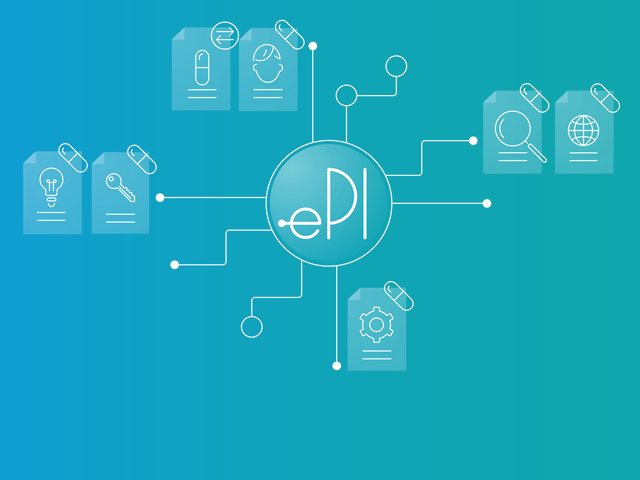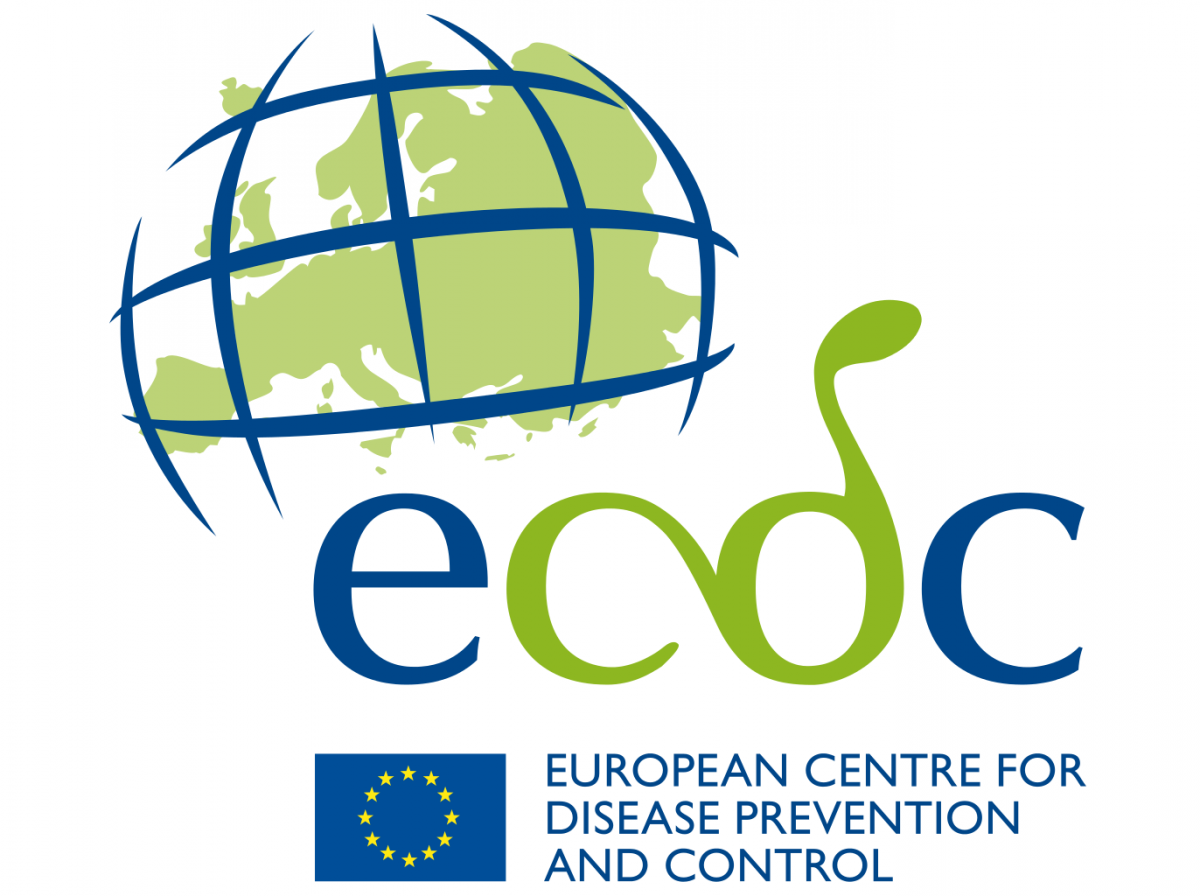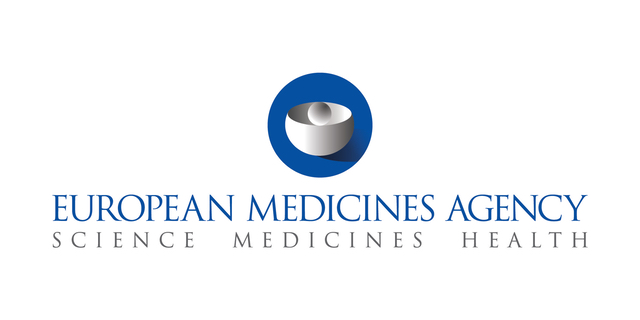The EAHP EU Monitor is a regular round up of news relevant to hospital pharmacy in Europe.
You can subscribe to receive the EAHP EU Monitor by email HERE.
EAHP Needs Assessment Survey

Every year the European Association of Hospital Pharmacists (EAHP) seeks input from the hospital pharmacy community for its future congresses via the Needs Assessment Survey. Hospital pharmacists are encouraged to share their views. The Needs Assessment Survey is based on the 44 European Statements of Hospital Pharmacy which express commonly agreed objectives that every European health system should aim for in the delivery of hospital pharmacy services.
Access the survey HERE
Learn more about the Statements HERE
Electronic product information for human medicines (ePI)

Healthcare professionals are invited to provide feedback on the draft key principles governing the electronic product information (ePI) for all human medicines authorised in the EU that will be developed and used throughout the European Union. The need to improve the summary of product characteristics (SmPC) and the package leaflet (PL) emerged in 2017 when the European Commission (EC) and European Medicines Agency (EMA) identified the areas where SmPC and PL could be improved to meet the needs of patients and healthcare professionals. The ePI will not eliminate, substitute or add to the current paper format, but provides the possibility of having a standardized electronic format. Therefore, the use of ePI will not constitute a new legal obligation and it will not affect Directive 2001/83/EC on medicinal products for human use.
Notable is the fact that, depending on the Member State that will decide to include the mobile technology feature on the medicine packaging, the ePI will have implications for (hospital) pharmacists. As outlined in the position of the Co-ordinated Group for Mutual Recognition and Decentralised Procedures for humans (CMDh), mobile scanning technology (such as 2D barcode, quick response codes, etc.) will ensure that (hospital) pharmacists can access additional information on for instance risk minimisation material.
The envisaged benefits of ePI are:
- improved dissemination and immediate update of the latest and regulator-validated information on a medicine’s safety, benefits and conditions of use in all EU languages, including Norwegian and Icelandic;
- enhanced readability, interconnectivity with present and future eHealth initiatives (electronic health records, e-prescribing and pharmacovigilance systems, the future European medicines web portal) and accessibility;
- improved patient input in development and testing, promoting best practices;
- development of a standard electronic format.
The HMA and EMA will develop an implementation roadmap in the future that will be based on the outcomes of this public consultation. The consultation hosted by EMA is available on its website until the 31st of July 2019. Hospital pharmacists are encouraged to participate.
Learn more about the initiative and access the consultation HERE
The EMA-HMA-EC workshop report, which also provides interaction scenarios for healthcare professionals with the ePI, is available HERE
CMDh position is available HERE
Have your say: ECDC survey targeting healthcare workers’ views on AMR
 Public Health England (PHE), commissioned by the European Centre for Disease Prevention and Control (ECDC), launched a survey to assess healthcare workers’ knowledge and perception on antibiotic use and resistance. The aim is to have a robust return of 10,000+ responses across the EU/EEA member states with representation from healthcare workers (doctors, nurses and midwives, dentists, (hospital) pharmacists and other healthcare workers (e.g. hospital managers, allied health professionals, technicians). ECDC is also seeking responses from health students.
Public Health England (PHE), commissioned by the European Centre for Disease Prevention and Control (ECDC), launched a survey to assess healthcare workers’ knowledge and perception on antibiotic use and resistance. The aim is to have a robust return of 10,000+ responses across the EU/EEA member states with representation from healthcare workers (doctors, nurses and midwives, dentists, (hospital) pharmacists and other healthcare workers (e.g. hospital managers, allied health professionals, technicians). ECDC is also seeking responses from health students.
The overall objectives of the study for ECDC are:
- to fill in gaps in terms of evaluation of communication campaigns targeting healthcare workers;
- to gain a better understanding of their knowledge and perceptions to provide a base to support future needs in terms of policy and education changes.
The survey is open until 14th February 2019 and takes 5-10 minutes to complete. Please note that the survey has been made available in all European/European Economic Area languages.
The survey is available HERE
HTA talks with EAHP involvement
 Part of the European Commission’s initiative on strengthening EU cooperation on Health Technology Assessment (HTA) was the expansion of the HTA Network. In addition to Member States, representatives from patient and consumer groups, health providers, payers and industry are engaging via the HTA Network Stakeholder Pool.
Part of the European Commission’s initiative on strengthening EU cooperation on Health Technology Assessment (HTA) was the expansion of the HTA Network. In addition to Member States, representatives from patient and consumer groups, health providers, payers and industry are engaging via the HTA Network Stakeholder Pool.
The aims of the HTA Network Stakeholder Pool are:
- to contribute to the policy development related to HTA at EU level by providing views, information and clinical expertise to the Coordination group;
- to ensure that stakeholder views are reflected in the policy development in a balanced way;
- to create synergies between different stakeholders.
The European Association of Hospital Pharmacists (EAHP) is part of the health providers group. The latest HTA Network Stakeholder Pool meeting took place on 16th January 2019 in Brussels, Belgium. The discussions focused on general updates on what has been done to involve stakeholders and the activities of the European Network for Health Technology Assessment (EUnetHTA). The afternoon was dedicated to exchanges on increased patient involvement in HTA procedures, information sharing between the industry and EUnetHTA focusing on horizon scanning, early dialogue and the identification of technologies for joint assessments.
The exchange with the HTA Network Stakeholder Pool has been carried out in parallel to the EC’s work on a legislative proposal for a Regulation on health technology assessment covering new medicines and medical devices that would amend Directive 2011/24/EU. The main changes point to the design of common European assessment methods, increased data and expertise sharing and the implementation of common procedures across the EU.
More information on the agenda and presentations is available HERE
Learn more about the EC’s HTA initiative HERE
Updates from the European Medicines Agency
 Last week the European Medicines Agency (EMA) announced the commencement of reviews for the cancer medicine Lartruvo and a study on bleeding risk with direct oral anticoagulants. In addition, the EMA shared information on nitrosamine impurities for sartan blood pressure medicines (also known as angiotensin II receptor blockers).
Last week the European Medicines Agency (EMA) announced the commencement of reviews for the cancer medicine Lartruvo and a study on bleeding risk with direct oral anticoagulants. In addition, the EMA shared information on nitrosamine impurities for sartan blood pressure medicines (also known as angiotensin II receptor blockers).
Review of cancer medicine Lartruvo started
EMA has started a review of the cancer medicine Lartruvo (olaratumab) after preliminary results from the ANNOUNCE study, which was requested at the time of authorisation in 2016, became available. These show that adding Lartruvo to doxorubicin does not prolong the lives of patients with soft tissue sarcoma more than doxorubicin alone.
Based on the preliminary results of the study, EMA has already recommended that no new patients should start treatment with the medicine, and healthcare professionals have been informed in writing of the updated treatment recommendations.
EMA will now assess the impact of the full study results on the medicine’s authorised use and recommend whether Lartruvo’s marketing authorisation in the EU should be maintained, varied or suspended.
Further information is available here.
EMA starts review of study on bleeding risk with direct oral anticoagulants
EMA is reviewing the results of a study with the direct oral anticoagulants Eliquis (apixaban), Pradaxa (dabigatran etexilate) and Xarelto (rivaroxaban). This observational study, commissioned by EMA, assessed the risk of major bleedings with these medicines when used to prevent blood clotting in patients with non-valvular atrial fibrillation (irregular rapid contractions of the heart), in comparison with other oral anticoagulants.
Results from this study show differences in the risk of major bleedings between these medicines. They also raise concerns about the level of adherence in clinical practice to restrictions, special warnings and precautions in the medicines’ product information.
The review aims to assess whether the results of this study have implications on the use of the medicines in clinical practice and whether any changes to the conditions of use and current measures to minimise the risk of bleeding would be needed.
Further information is available here.
EMA Communication: Sartan medicines: companies to review manufacturing processes to avoid presence of nitrosamine impurities
Companies that make sartan blood pressure medicines (also known as angiotensin II receptor blockers) are being required to review their manufacturing processes so that they do not produce nitrosamine impurities.
These recommendations follow EMA’s review of N-nitrosodimethylamine (NDMA) and N‑nitrosodiethylamine (NDEA), which are classified as probable human carcinogens (substances that could cause cancer) and have been detected in some sartan medicines.
For the vast majority of sartan medicines, impurities were either not found or were present at very low levels.
The review estimated the highest possible cancer risk with these impurities. It concluded that if 100,000 patients took valsartan from Zhejiang Huahai (where the highest levels of impurities were found) every day for 6 years at the highest dose, there could be 22 extra cases of cancer due to NDMA over the lifetimes of those 100,000 patients. NDEA in these medicines could lead to 8 extra cases in 100,000 patients taking the medicine at the highest dose every day for 4 years. The estimates have been extrapolated from animal studies and are very low compared with the lifetime risk of cancer in the EU (1 in 2).
Further information, including specific information for patients and healthcare professionals, is available by clicking here.
EJHP: Results of EAHP’s 2018 Survey on Medicines Shortages

The online first edition of the European Journal of Hospital Pharmacy (EJHP) recently published an original article on the results of EAHP’s 2018 Medicines Shortages Survey. Based on the data collected from 1666 participants across Europe the article concludes that medicines shortages are an increasing problem that have an adverse impact on patient care by adding to hospital pharmacists’ time pressures and budgets. More timely information about impending shortages and how long they will last is seen as necessary to help manage the problem.
Read the article HERE
[EAHP Statement Corner]
New SILCC host available!

The Özel Giresun Ada Hospital in Turkey has joined EAHP’s Statement Implementation Learning Collaborative (SILCC) programme as a SILCC host. The programme provides you with the unique opportunity to broaden your horizon by learning more about pharmacy procedures linked to the European Statements of Hospital Pharmacy. As SILCC Fellow you now choose between host institutions in 7 different European countries. Have a look at the registration requirements and hand in your application today!
————————————————————————————————

Consultations
ECDC – Healthcare workers’ knowledge and perceptions about antibiotics and antibiotic resistance
Public Health England (PHE), commissioned by the European Centre for Disease Prevention and Control (ECDC), launched a survey to assess healthcare workers’ knowledge and perception on antibiotic use and resistance. The main target audience are healthcare workers, such as doctors, nurses and midwives, dentists, (hospital) pharmacists, hospital managers, allied health professionals, technicians and health students. The responses will feed into future healthcare policy proposals and educational initiatives on the AMR matter.
Deadline –14th February 2019
Survey is available HERE
EMA – Draft guideline on clinical investigation of medicinal products in the treatment of epileptic disorders
The present document is a third revision of the existing guideline. The main changes to the existing guideline include incorporation of the new classification / definitions of seizure types and epilepsies, the acceptance of add-on studies in support of a monotherapy claim on a case-by-case basis, the inclusion of new sections on neonates and status epilepticus and other changes related to paediatric developments. The scope of this document is restricted to treatment of seizures in epileptic disorder although there are some remarks concerning non-seizure features of epilepsy syndromes.
Deadline – 17th February 2019
More information HERE
Survey on patients opinion about drug shortages
COST Action CA 15105 on medicines shortages invites you to participate in a qualitative study regarding patients’ perspective about medicine shortages during hospital stay. Hospital pharmacists are encouraged to question interested patients who are willing to share their experience with medicines shortages. Questions in relation to this survey activity can be address by email to Darija Kuruc Poje (darijakuruc21@gmail.com).
Deadline – 1st March 2019
Access the survey HERE
EMA – Guideline on the evaluation of medicinal products indicated for treatment of bacterial infections
The EMA has launched a consultation on the revision of its guideline on the evaluation of human medicines indicated for the treatment of bacterial infections. Antimicrobial resistance is a global public health problem. Regulators in the European Union, the United States and Japan have had extensive discussions over the last few years to explore and agree how to align as much as possible their respective data requirements so that medicine developers can design clinical trials that meet the evidence needs of multiple regulatory agencies. The revised guidance reflects the outcome of these discussions.
Deadline – 31st July 2019
Access consultation HERE
EMA – Public consultation on key principles for the electronic product information of EU medicines
The European Medicines Agency (EMA), together with the European Commission (EC), has launched a public consultation on draft key principles which will form the basis on which the electronic product information (ePI) for human medicines will be developed and used throughout the European Union. The rationale behind the ePI is that digital platforms open additional possibilities to disseminate the PI electronically. This can address some of the current limitations and better meet patients’ and healthcare professionals’ needs for accessible, up-to-date information on medicines. The draft key principles are the result of extensive discussions and consultations carried out by EMA, the Heads of Medicines Agencies (HMA) and the EC throughout 2018, with representatives of all stakeholder groups.
Deadline – 31st July 2019
Access consultation HERE



























 Public Health England (PHE), commissioned by the European Centre for Disease Prevention and Control (ECDC), launched a survey to assess healthcare workers’ knowledge and perception on antibiotic use and resistance. The aim is to have a robust return of 10,000+ responses across the EU/EEA member states with representation from healthcare workers (doctors, nurses and midwives, dentists, (hospital) pharmacists and other healthcare workers (e.g. hospital managers, allied health professionals, technicians). ECDC is also seeking responses from health students.
Public Health England (PHE), commissioned by the European Centre for Disease Prevention and Control (ECDC), launched a survey to assess healthcare workers’ knowledge and perception on antibiotic use and resistance. The aim is to have a robust return of 10,000+ responses across the EU/EEA member states with representation from healthcare workers (doctors, nurses and midwives, dentists, (hospital) pharmacists and other healthcare workers (e.g. hospital managers, allied health professionals, technicians). ECDC is also seeking responses from health students. Part of the European Commission’s initiative on strengthening EU cooperation on Health Technology Assessment (HTA) was the expansion of the HTA Network. In addition to Member States, representatives from patient and consumer groups, health providers, payers and industry are engaging via the HTA Network Stakeholder Pool.
Part of the European Commission’s initiative on strengthening EU cooperation on Health Technology Assessment (HTA) was the expansion of the HTA Network. In addition to Member States, representatives from patient and consumer groups, health providers, payers and industry are engaging via the HTA Network Stakeholder Pool.  Last week the European Medicines Agency (EMA) announced the commencement of reviews for the cancer medicine Lartruvo and a study on bleeding risk with direct oral anticoagulants. In addition, the EMA shared information on nitrosamine impurities for sartan blood pressure medicines (also known as angiotensin II receptor blockers).
Last week the European Medicines Agency (EMA) announced the commencement of reviews for the cancer medicine Lartruvo and a study on bleeding risk with direct oral anticoagulants. In addition, the EMA shared information on nitrosamine impurities for sartan blood pressure medicines (also known as angiotensin II receptor blockers).


